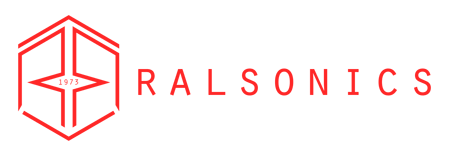30 Jul Using Sonicators In The Pharma Industry
Reading Time: 2 minutesSteel industry can achieve precision cleaning by adopting ultrasonic cleaners over regular surface cleaning practices. Sonication technology uses sound waves as a means to agitate particles in a solution. It creates physical vibrations to break substances. These disruptions can be used for mixing solutions and accelerating the dissolution process in the pharmaceutical industry. This is just one of the applications of sonicators in the pharmaceutical business. Read on to explore how sonication can enable various processes within this industry.
Sonication and the Pharma Industry
Sonication generates energy in the form of strong and rapid vibrations, and these continue to produce energy. This energy can have multiple uses within the pharmaceutical industry. Here, we have listed out the prominent use cases of this technology.
Power Ultrasonics
Power ultrasonics is applied in the pharma industry to produce vaccines, drug carriers, and nano-formulated drugs. Labs can implement this process to make pharma-grade micro-emulsions and nano-dispersions, vaccines, and liposomes.
The pharma industry ultrasonic systems come with prebuilt CIP (clean-in-place) as well as SIP (sterilize-in-place) functions that guarantee efficient and safe production adhering to the strictest of pharmaceutical standards.
Particle Agitation
Pharma sector companies use ultrasonic energy to agitate particles. This agitation can be performed to mix solutions, improve the dissolution rate, and evaporate any dissolved gasses from the liquid substances.
Sonicators are instruments working on high-frequencies beyond a human being’s hearing capabilities. These ultrasonic waves are typically above 20 kHz. Once these frequencies are generated, they result in particle vibration. This occurs due to continuous cycles of alternating low and high pressures created by sound waves as they pass through the solution. The resulting microscopic vacuum bubbles undergo formation and collapsing cycles known as cavitation.
Probe Sonicators In Pharma Industry
Sonication in the pharma industry is achieved with the help of probe sonicators. It comprises three main components – a generator, a converter, and a probe (or the ultrasonic horn). These three components work in tandem giving rise to chain reactions delivering ultrasonic energy to get the desired outcome.
The generator is responsible for supplying power (electronic pulses) to the sonicator. The converter transforms the pulses into vibrations (conversion to mechanical vibrations). These are then fed into the probe as a sample medium. Therefore, the probe is responsible for location targeting to achieve exact results.
In Conclusion
At Ralsonics, we use ultrasound typically in single or dual-frequency wavelengths of 20-40kHZ. It agitates the fluid field At Ralsonics, our lab ultrasonic processors or probe sonicators are capable of performing homogenization, dispersion, particle size reduction, sonochemistry, deagglomeration, as well as disintegration. Visit our website https://www.ralsonics.com/pharmaceutical-processing/ to know more about our probe sonicators and how they can address the issues faced by pharma industry businesses.



No Comments